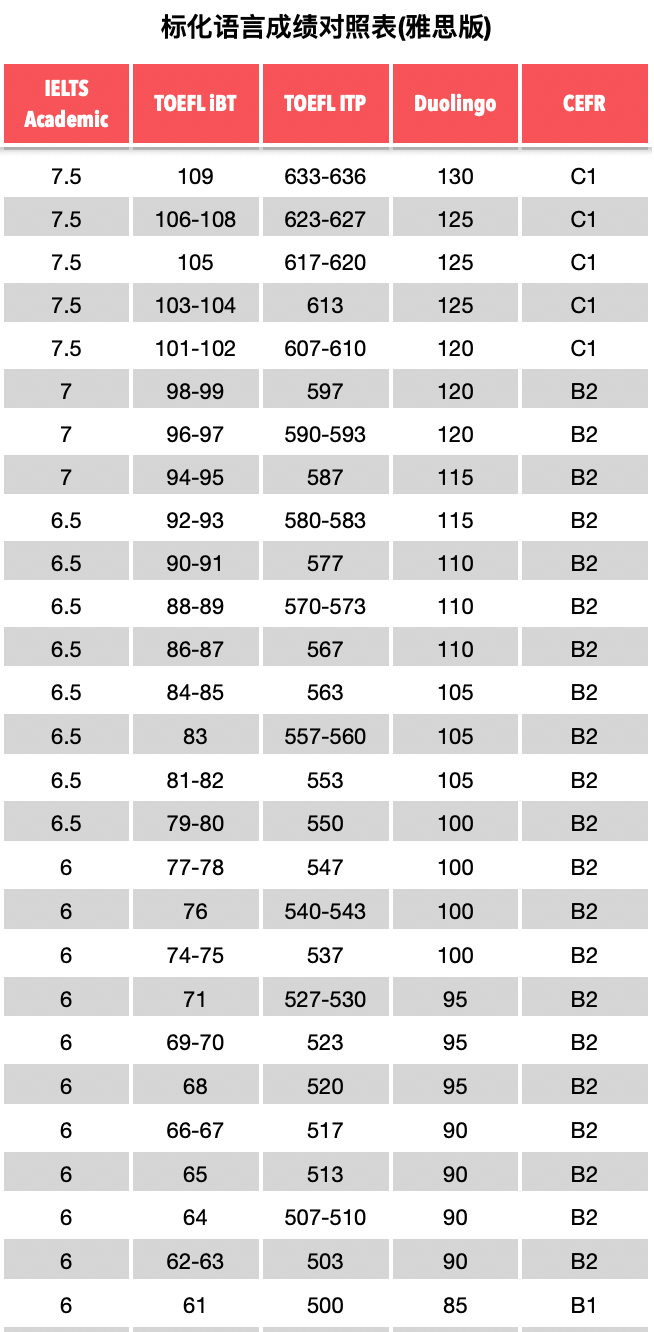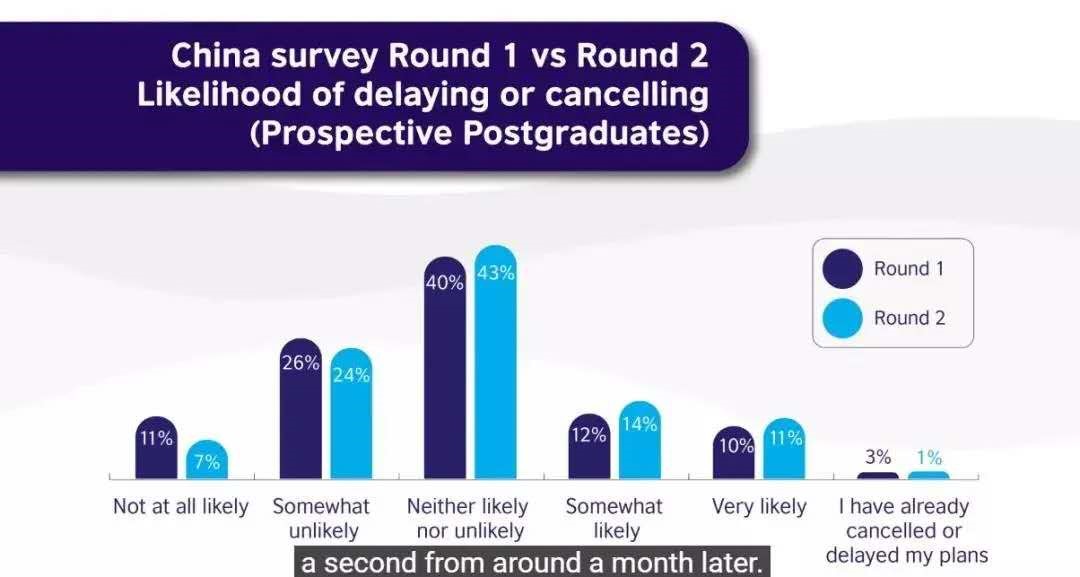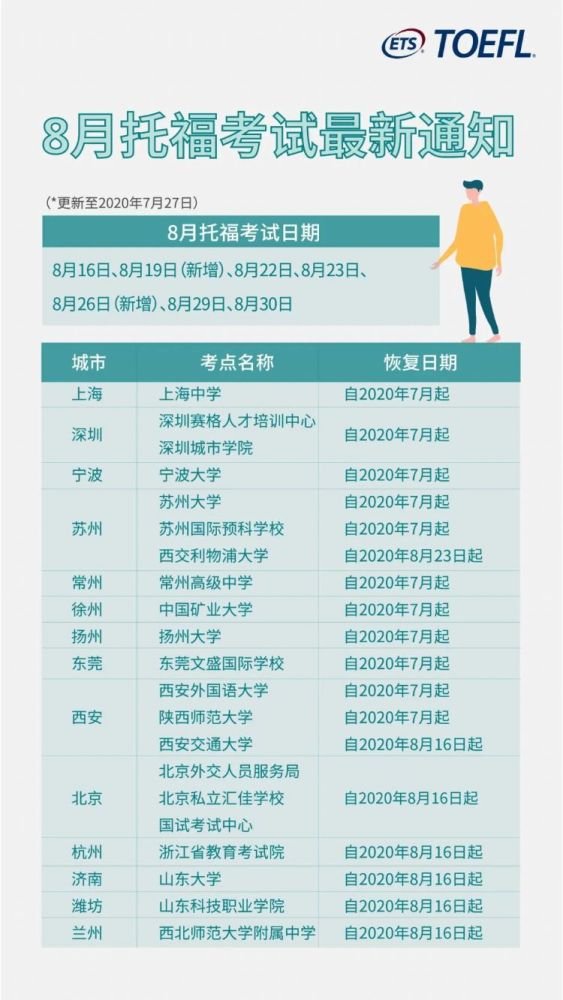托福听力备考,考生在不同的水平阶段需要的学习方法是有所差异的,今天小编给大家带来了托福听力3个阶段考生备考心得细节详细指点,希望能够帮助到大家,下面小编就和大家分享,来欣赏一下吧。
托福听力3个阶段考生备考心得细节详细指点
托福听力15分以下基础较差的同学
对于这部分学生,听不懂,非听之错。根本就是词!汇!量!太!小!所以每天在听力练习上需要3-4小时。前期需要4个小时,随着复习进度的深入,时间可略微减少,但不能少于 3小时。
做什么:
每天必须用 2小时来背单词, 1到2小时练习听写和跟读。
1. 词汇:先以自己最习惯的方式看着背两遍,再听着背一遍,记住一定要去听单词。
2. 听写:根据自己的实际程度,选择合适的材料(如老托、新托对话等,如果想要挑战自己,也可选择演讲)来进行一至两个小时的听写练习。注意一点:此时的听写重点放在识别单词读音上,做到听到读音能够迅速反应单词,在此基础上理解听写内容的含义。
3. 跟读:此阶段的跟读练习十分的重要,能纠正我们的错误发音,提升耳朵对音节识别的敏感度。
此阶段的练习需要做到1到2个月的时间为宜。
托福听力水平适中,成绩在15-20分之间
此类学生,单词不是不会而是不熟,听音不是听不懂而是听不全,同时对于句子的理解力处在50%-60%之间。所以每天除了需要1个小时来巩固之前单词之外(必须听音背单词);还需要2个小时来练习听写跟读,区别在于此阶段要把重点更多地放在整体句子的理解上,而不要单纯纠结某几个音节是什么。
做什么:
1. 听单词的发音,然后快速回忆单词的词形和词义。
2. 接着2个小时练习听写或跟读。材料拿TPO中稍简单的演讲材料(如生物类文章)。
3. 此阶段听写最好要开始做中文的听译,跟读挑选文章中无法迅速理解的句子联系为宜
如此这般坚持两周会有明显提升,一个月后,基本可以做到重点信息不再遗漏,做题不会再有完全陌生的感觉。
托福听力在20+的考生
或者说在做题时,演讲的题目每篇有一个错误。对于这类学生,信息提取和理解都不再是重大问题。问题在于听音精细程度和理解准确程度还不够,同时,文章的框架和结构意识还需要加强。因此每天一至两个小时的听力复习时间还是必要的。
做什么:
1. 需要半个小时温习已背单词以及记忆新单词;
2. 然后用一个小时进行高难材料的听写练习,目的是提高听音精细程度和理解的准确程度。材料以TPO讲座较难的文章为主,或者也可选择自己比较不擅长的文章类型。
3. 最后的半个小时梳理所听文章的结构,按照结构进行文章的复述。
这样练习两周后会感觉从容许多。一个月后笔记变得简洁完整,有效内容大大增加,由于细节填充,复述时内容也会更加完整。
2020托福听力练习:全球荒野面积减少
Only about 23 percent of the world's land area is still what you'd call wilderness—where indigenous people, wildlife, plants and microbes get a chance to live with little or no disturbance from large human populations. But even that current figure of 23 percent is down by a tenth in just the last couple of decades. Which translates into an area the size of Alaska being converted away from wilderness since the 1990s. That's according to a study in the journal Current Biology that was also announced at the just completed Honolulu meeting of the International Union for Conservation of Nature.
The research found that the regions that suffered the biggest wilderness losses were South America and Central Africa. South America lost almost a third of its wilderness while Africa's is down about 14 percent.
James Watson is the lead author of the study. He's with the Wildlife Conservation Society and the University of Queensland—he's no relation to the more famous DNA double helix James Watson.
In the journal article he and his colleagues write: "The continued loss of wilderness areas is a globally significant problem with largely irreversible outcomes for both humans and nature: if these trends continue, there could be no globally significant wilderness areas left in less than a century. Proactively protecting the world's last wilderness areas is a cost-effective conservation investment and our best prospect for ensuring that intact ecosystems and large-scale ecological and evolutionary processes persist for the benefit of future generations." And future generations includes both the organisms in the remaining wilderness—and us.
世界上只有23%的土地仍可被称为荒野,在那里,土著、野生动物、植物和微生物有机会生活在一个很少或没有人干扰的地方。但即使是目前这23%的占比在过去二十年里也减少了十分之一。上世纪90年代以来,相当于阿拉斯加大小的荒野面积损失。这是一篇发表在《当代生物学》期刊上的研究报告得出的结论,该研究成果在刚刚结束的国际自然保护联盟火奴鲁鲁会议上宣布。
研究发现,荒野损失最严重的地区是南美洲和中非。南美洲损失了近30%的荒野,而非洲则减少了14%的荒野。
詹姆斯·沃森是这项研究的主要作者。他在野生动物保护协会和昆士兰大学工作,大家可能知道DNA双螺旋的发现者詹姆斯·沃森,不过我们这里提到的并不是同一个人。
他和他的同事在期刊文献中写道:“荒野地区的持续损失是全球性的重要问题,对人类和自然造成的影响在很大程度上是不可逆转的:如果这种趋势继续下去,不出一个世纪的时间,具有全球性重要意义的荒野地区可能将不复存在。积极保护世界上最后的荒野地区是具有成本效益的重大投资,也是我们确保完整生态系统的最好前景,同时让大规模的生态进化过程为后代造福。”这里的后代既包括现存荒野中的生物,也包括我们人类。
2020托福听力练习:光子芯片增加智能手机加密力度
Today's cars have loads of computer smarts built in. Like the chips that allow you, with the push of a button to unlock your car. And as new cars move down the assembly line, automakers program those functions into the car.
"They produce one car and they program a cryptographic secret in it, in order to secure it against thieves." Timo Kasper, a cryptographer and engineer at the security and IT consulting company Kasper & Oswald. "Then comes the next car on the production line and they put the same secrets into the second car. And then comes the third car on the production line and they again put the same secrets into this car. And they repeat this process for millions of cars in the world. And now millions of cars in the world share the same cryptographic secret. Of course, this secret is not so well protected anymore, because it's in every of these million cars, and in every remote control. And this is of course a typical example of how to not do it."
And yet, he says that's exactly how the Volkswagen Group did do it, for many cars manufactured in the last 20 years. Kasper and his colleagues decoded that shared cryptographic secret by studying the design and operation of chips from VW Group cars and remotes. After hacking the hardware, they were easily able to eavesdrop on and decrypt unlocking signals, clone the remote control and unlock cars. They presented the details August 12th at the USENIX Security Symposium, in Austin, Texas.
Kasper says VW is aware of the problem—and they're not alone. "This is not a VW bug but this is a red line, as we Germans say, through all the automotive industry." In fact, in the same study, they showed that another encryption system used by many other brands, including Ford, Chevy, Nissan and Mitsubishi, has a weak cryptographic algorithm—which, again, allowed the team to break into more than a dozen cars.
Bottom line? It's easier to hack into cars than many drivers might have imagined. So if you want to avoid eavesdropping, the researchers recommend simply ditching remote controls and cryptography, and just go back to the good old metal key.
现在的汽车配备了大量电脑智能系统。比如芯片,让你可以一按按钮就打开车门。新车从装配线下线时,汽车制作商就已经将这些功能编入汽车。
“汽车制造商每生产一辆汽车,就会在车内编写一个加密程序,目的是确保汽车可以防盗。”蒂莫·卡斯珀是卡斯珀和奥斯瓦尔德安全信息咨询公司的密码学家兼工程师。“然后在生产下一辆车时,他们会在这辆车上装上同样的密码系统。在生产第三辆车时,他们会再次装上同样的密码系统。他们在全球数百万辆车上重复这一过程。现在全世界有数百万辆汽车拥有同样的加密程序。当然,这个密码系统不再受到较好的保护,因为在这数百万辆车中,每辆车、每个遥控装置中都有这一密码系统。这当然是个应该避免的典型的例子。”
他表示,大众汽车就在对过去20年间生产的汽车上进行了上述操作。卡斯珀和同事们通过研究大众汽车和其遥控装置的芯片,解码了车辆共享的密码系统。在入侵硬件之后,他们很容易能够窃听和解密释放信号,克隆遥控装置解锁汽车。8月12日,他们在得克萨斯州奥斯汀举行的USENIX安全研讨会上公布了具体的信息。
卡斯珀表示。大众公司已经意识到了这个问题——意识到问题的不仅仅是大众公司。“这不是大众的漏洞,就如我们德国人描述的那样,这是整个汽车行业的红线。实际上,在同一个研究中,他们发现福特、雪弗兰、尼桑、三菱等其他品牌使用的加密算法也有纰漏,这使研究团队再一次成功解锁了10多辆汽车。
底线?入侵解锁汽车比许多司机想的更容易。如果你想避免被窃听的话,研究人员建议,只要不使用遥控和加密装置,重新使用传统的金属钥匙就可以了。
重点讲解:
1. in order to 为了;以便;目的在于;
例句:She stepped forward in order to see clearly.
她向前走了一步以便能看得更清楚。
2. eavesdrop on 偷听;窃听;
例句:German hacker claims to have cracked the encryption that protects most cellphone calls, potentially paving the way for others to eavesdrop on conversations.
一名德国黑客声称破了保护大部分手机通话的加密编码,使窃听他人手机通话成为可能。
3. be aware of 注意到的;察觉到的;意识到的;
例句:John has been aware of having done something wrong.
约翰已意识到自己做错了事情。
4. break into 强行进入;闯入;
例句:They break into computers and break the phone system. Real hackers call these people crackers and want nothing to do with them.
他们入侵电脑,破坏电话系统。真正的黑客叫这些人骇客,而且不想与他们扯上边。
5. hack into (尤指为获取机密信息)侵入,非法进入(他人的计算机系统);
例句:There is no doubt that it is a criminal offence to hack into others' computers and get secret data .
毫无疑问,非法侵入他人电脑获取机密资料是刑事犯罪。
托福听力3个阶段考生备考心得细节详细指点
上一篇:雅思考试有哪些模式及报名费用
下一篇:托福听力出现复杂句式如何秒懂






